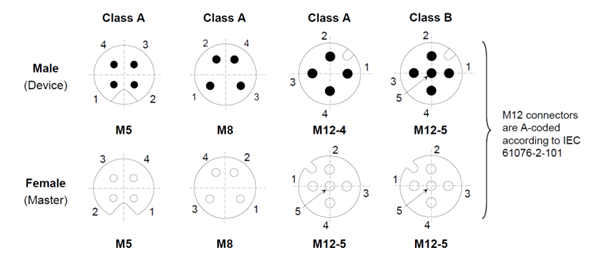SSZT956 september 2017 TIOL111 , TIOL1115 , TIOS101 , TIOS1015
You’ve likely heard of the Internet of Things (IoT) and how it not only connects your internet-enabled devices to each other, but enables them to communicate and share data to improve your quality of life. Today, the manufacturing industry is using the IoT as a key piece of the next wave of manufacturing. Industry 4.0, which is a word some have coined to mean the next industrial revolution, describes factory automation and the ability to construct a “smart factory” where data is easily exchanged and harnessed to keep factories running at maximum efficiency. IO-Link is an important interface to implement this factory transition.
You may think that factories are already efficient based on the quality of products you buy today and the price at which you can purchase them. In reality, factories have numerous inefficiencies that an interface like IO-Link can help reduce. The IO-Link Consortium and International Electrotechnical Commission (IEC) 61131-9 standard established a bidirectional, manufacturer-independent communication protocol for sensors and actuators. The specification also defines a mechanical interface that is fully backward-compatible with existing field buses, such as Profibus, Profinet and EtherCAT, used today.
Let’s look at few key advantages of IO-Link and how they are helping drive factory automation:
- Bidirectional communication. Today’s factories primarily use one-way sensors, meaning that they only provide data based on standard input/output (SIO)/digital output switches. So if a red wagon in a toy factory comes down the line painted green, the one-way sensor alerts engineers of the fault. But that isn’t helpful if someone actually ordered a green wagon. IO-Link’s bidirectional protocol enables factories to easily update sensor parameters, enabling custom orders without going to the factory floor to reprogram each sensor. Bidirectional communication also provides factories real-time information about cable breaks, overtemperature conditions, output shorts and transfer diagnostics. In some cases, the sensor can even alert the factory that it is nearing its end of life.
- Manufacturer-independent. Manufacturers who follow the IO-Link standard will produce sensors and actuators that operate, not only with their other products (sensors, programmable logic controllers [PLCs]), but with competitor solutions. A standard interface, cable and connector gives factories the ability to develop a process that delivers products based on their key requirements, while maintaining a high level of efficiency and flexibility.
- Communication protocol.
IO-Link’s point-to-point communication protocol enables up to 32 bytes depending
on the required cycle time. Additionally, the IO-Link master can store sensor
and timing parameters. This key feature enables engineers to easily switch out
faulty sensors and download parameters to the new sensor automatically, further
reducing downtime and increasing factory efficiency.
- Backward compatibility. As I mentioned, SIO/digital output switches are the primary interface to the PLC today. There are many SIO sensors installed in factories today, and the thought of replacing them with a new technology is an overwhelming one. The IO-Link authors recognized this and mandated that the connector for IO-Link must use not only the same connector/pinout as the installed base, but also the same cabling, so that manufacturers could easily update their factory lines.
These connectors, as shown in Figure 1, are based on the specifications outlined in IEC 61131-9. They are the same (M5, M8 and M12 type) connectors used throughout installations today.
 Figure 1 IO-Link SIO Connectors
Figure 1 IO-Link SIO ConnectorsConnections can occur across a three-wire (or more) cable stretching to a maximum of 20 meters (66 feet). Table 1 defines the IO-Link signals.

* Required for three-wire interface Table 1: IO-Link cable definitions
If you’re familiar with SIO, you’ll notice that its functions are the same as those listed in the table, with VCC, OUT and GND usually referenced. Both IO-Link and SIO use the C/Q (or OUT) signal for data.
TI has shipped IO-Link-enabled transceivers since 2011 and recently released its second generation of transceivers. In my next blog post, I’ll talk about how our TIOL111 IO-Link device transceiver and TIOS101 digital output switch further enable smart factories.
Additional Resources
- Learn more about our IO-Link and digital output switches.
- Evaluate your device today with the TIOL1115 and TIOS1015 evaluation modules.
- Download the Smart Solenoid Driver with Predictive Maintenance Reference Design featuring the TIOL111.